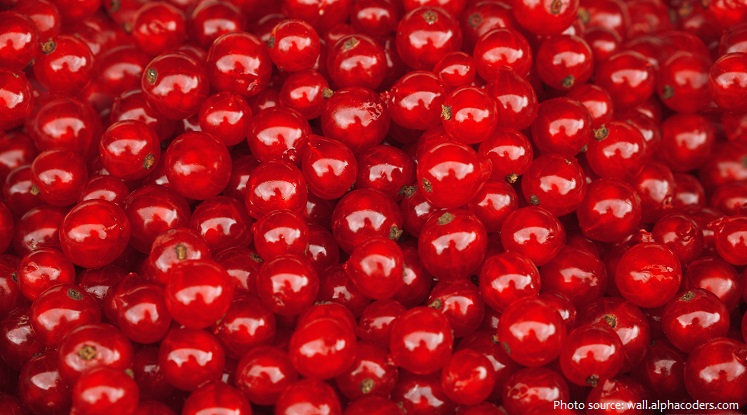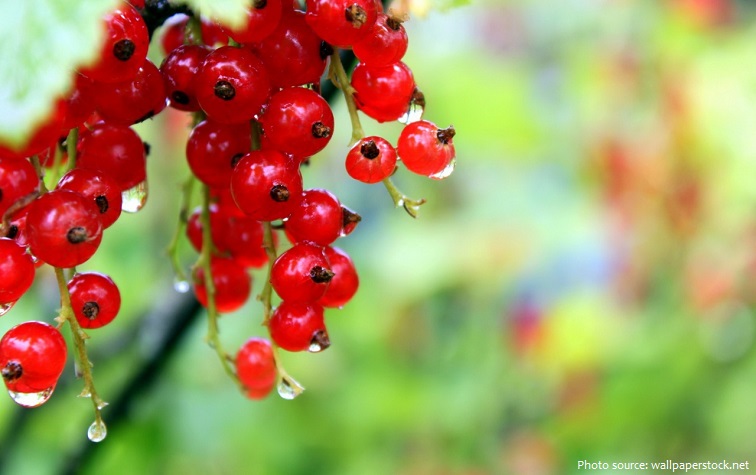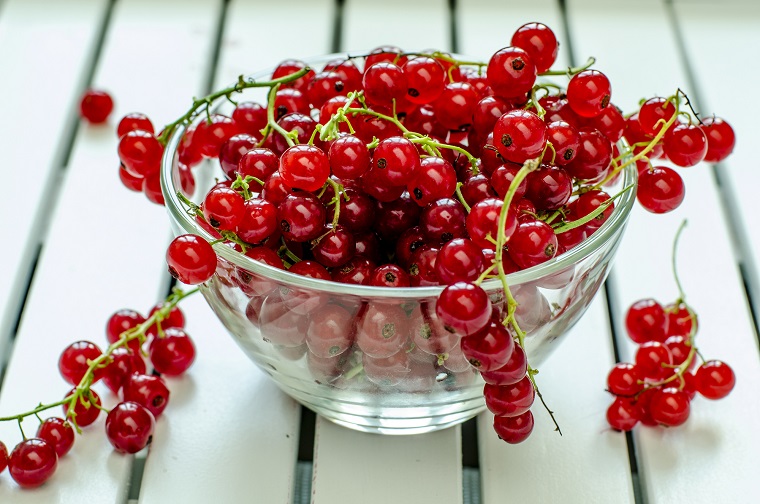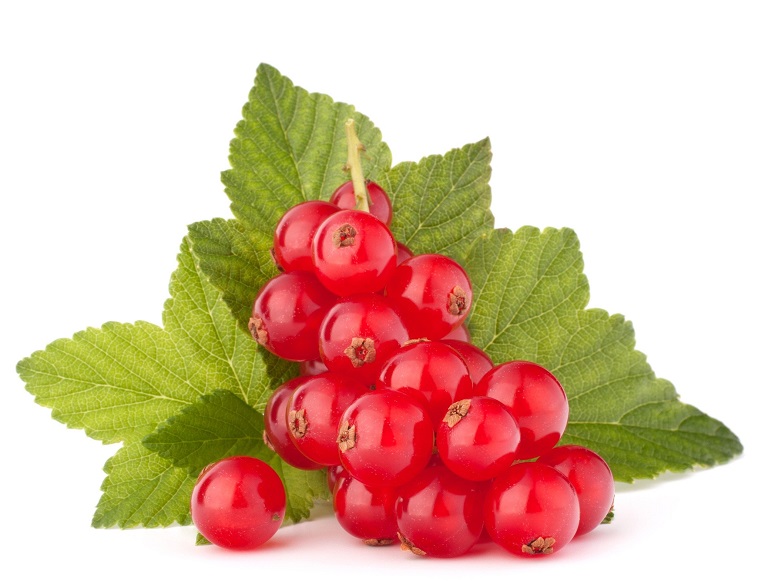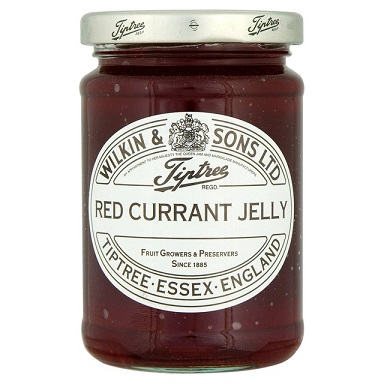The redcurrant, or red currant (Ribes rubrum) is a member of the genus Ribes in the gooseberry family.
It is a deciduous low-growing shrub native to northern Europe and northern Asia, which is widely cultivated for its fruit both commercially and in home gardens.
The redcurrant generally grows to 1 to 1.5 m (3 to 4.5 ft) in height, with smooth or gland tipped hairy stems, lacking the spines or prickles that are common on many Ribes species.
The leaves are alternate and simple, with 3 to 5 coarsely toothed lobes; the terminal lobe is longer than the side lobes. The small bisexual flowers, greenish to greenish brown, are borne in racemes (clusters) of 5 to 15 flowers.
The smooth-skinned, globe-shaped fruit, which usually ripens to bright red (although some cultivars are pale red or green), is a juicy berry (a soft fleshy fruit with several to many soft seeds embedded in the pulp), with the remains of the calyx (flowering parts) persisting at the end. Fruits are up to 1.1 cm (0.5 in) in diameter.
There are 56 calories in 100 grams (3.5 ounces) of redcurrants.
Redcurrant fruit is a good source of dietary fiber and several other essential nutrients such as vitamin C, vitamin B, vitamin E, beta-carotene, iron, phosphorus, copper, potassium, magnesium, calcium, zinc and manganese.
The health benefits of redcurrants include healing from harmful UV ray damage, good for the formation of red blood cells, helps boost the immune system of the body, reduce the risk of strokes and heart diseases, helps prevent type 2 diabetes. It also helps remove waste materials, excessive salts, and toxins, effective in relieving certain skin ailments including eczema and acne, prevent gum diseases that cause loosening, reddening, and inflammation of gums.
The tart fruits, are sometimes eaten fresh, out of hand or in fruit salads (although generally with sugar added, as they can be quite sour). More typically, they are prepared into jams, jellies, syrups, and sorbets, and are used in a wide variety of baked goods and desserts.
In France, the highly rarefied and hand-made Bar-le-duc or Lorraine jelly is a spreadable preparation traditionally made from white currants or alternatively redcurrants.
In the United Kingdom, redcurrant jelly is a condiment often served with lamb, game meat including venison, turkey and goose in a festive or Sunday roast.
In Scandinavia and Schleswig-Holstein, it is often used in fruit soups and summer puddings.
In Germany it is also used in combination with custard or meringue as a filling for tarts.
In Linz, Austria, it is the most commonly used filling for the Linzer torte.
In Russia, redcurrants are ubiquitous and used in jams, preserves, compotes and desserts; while leaves have many uses in traditional medicine.
In Mexico, redcurrants are a popular flavour for iced/frappé drinks and desserts, most commonly in ‘raspado’ (scraped ice) form.
